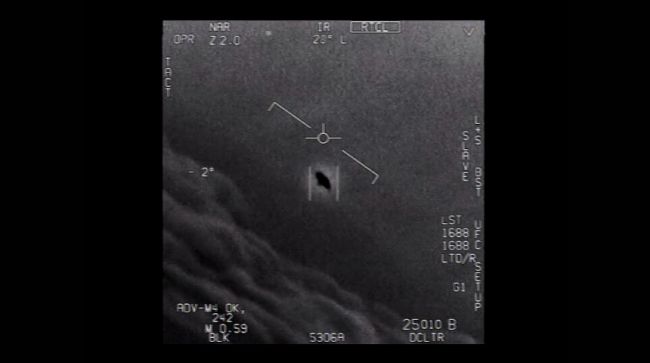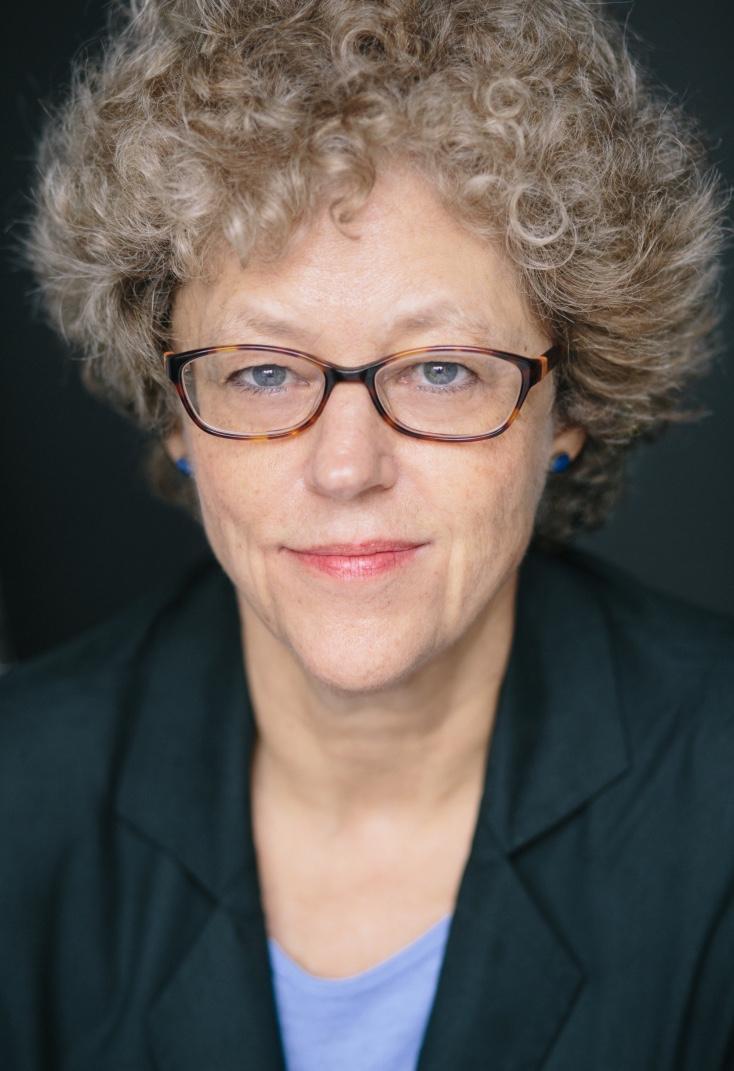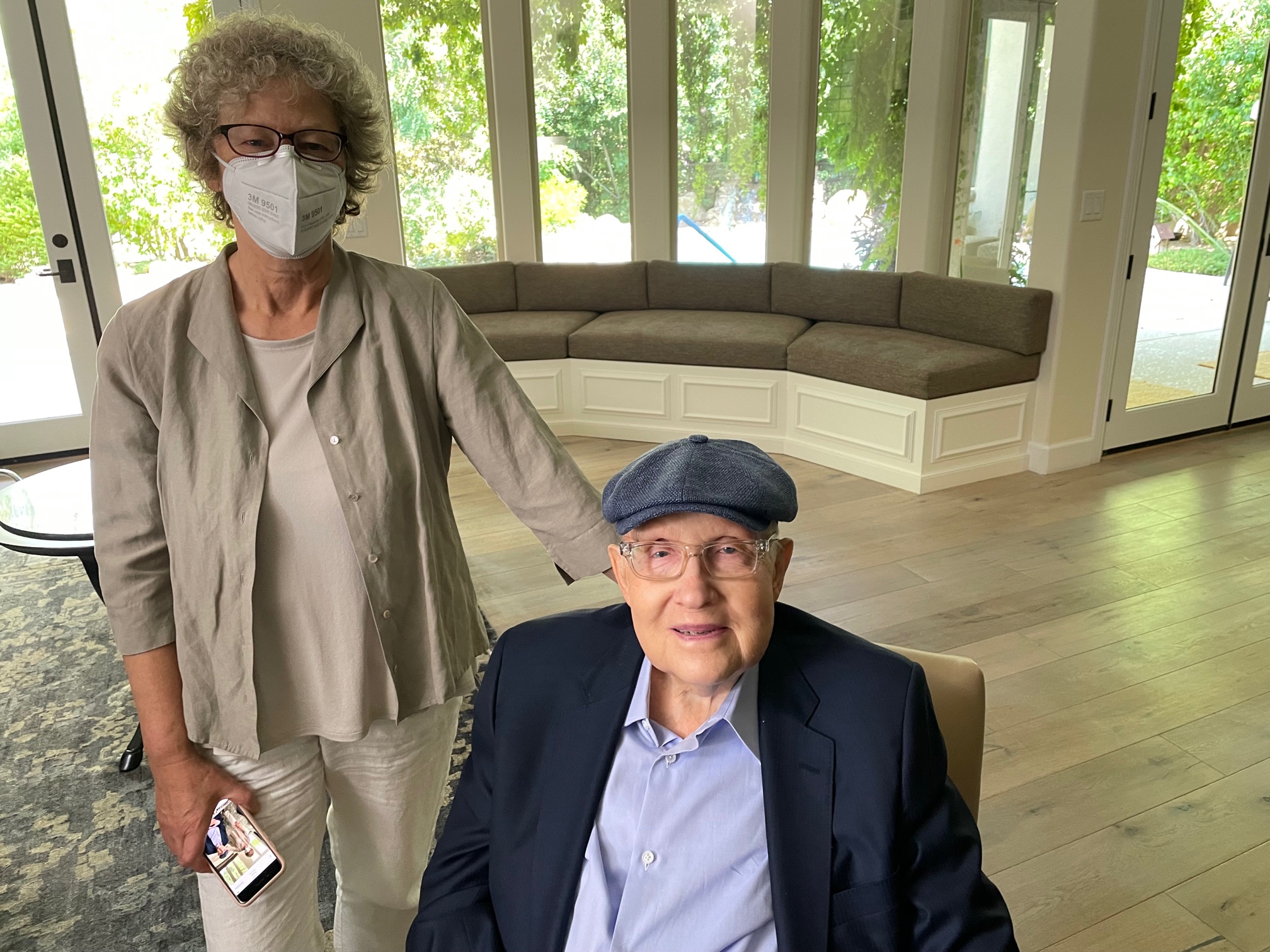The new reality of UFOs: An interview with journalist Leslie Kean
The past few years have seen a big change in how UFOs are perceived, both by the public and by government officials.

Leslie Kean is a veteran investigative reporter who has spent over 20 years delving into the once-taboo topic of unidentified flying objects (UFOs). UFOs are now established as real, she says. Furthermore, despite observations using highly advanced technologies, we have no idea what they are or where they come from.
While Kean has never seen a UFO, her own close encounters with hundreds of government documents, aviation reports, radar data and case studies with corroborating physical evidence, as well as interviews of dozens of high-level officials and aviation witnesses from around the world, have bolstered her belief that UFOs are worthy of scientific study. "I believe we may have finally arrived at the threshold of a new paradigm," Kean said.
Kean is author of the New York Times bestseller "UFOs: Generals, Pilots and Government Officials Go on the Record (Harmony Books/The Crown Publishing Group, 2010). More recently, she co-authored eye-opening articles in The New York Times that focused on sightings of UFOs, which the U.S. military has recently rebranded as unidentified aerial phenomenon (UAPs), and the government programs to investigate them. She also wrote "UFOs: Shifting the narrative from threat to science," an article published on The Debrief earlier this month.
Space.com recently caught up with Kean to discuss what she thinks is in the offing concerning UFOs, what stands in the way of the scientific community's taking on the challenge of discovering if any UFOs are extraterrestrial, and more.
Related: 7 things most often mistaken for UFOs

Space.com: How do you best characterize where we are today, given your NY Times co-authored piece that catapulted things into public view?
Kean: We have seen a major sea change since our December 2017 New York Times story that included two Navy videos. The government has acknowledged the reality of UFOs and the fact that they impact national security, and that alone is a major shift. We have more Navy videos of unexplained objects, an official UAP Task Force, and most recently a government report on UAP which was requested by the Senate Select Committee on Intelligence.
Get the Space.com Newsletter
Breaking space news, the latest updates on rocket launches, skywatching events and more!
The report stated there is no evidence that UAP are ours, Russian or Chinese. It forced many stove-piped agencies to pool information for the first time and gained further attention for UAP from policymakers, with some calling for open congressional hearings. Even before the June 2021 UAP report, high level officials have made statements as to the need for further investigation of these unexplained objects exhibiting technology beyond what we possess. The taboo against taking the subject seriously is diminishing, and scientists have come out of the woodwork advocating for studies on UAP in Scientific American. These events are unprecedented. And the media can't get enough of UFOs. Recently, for the first time, UFOs were covered by both The New Yorker and the CBS show, "60 Minutes."
Space.com: Do you believe the "UAP" focus is the same as decades of "UFO" reports? Are they one and the same or not, in your view?
Kean: I don't think there's any difference in how the reports describe the phenomenon. Government documents such as the famous 1947 Twining Memo describe the behavior of the objects in the same way as later documents did, and in the same way they are reported today. The difference is that today we have better cameras, radar, satellite and sensor technology than we had decades ago, increasing the specificity of data on UAP (which remains classified).
The term "UAP" has gradually become the preferred term used by the government and military, because it encompasses a broader range of phenomena than the term "UFO." But since "UAP" came into use primarily to avoid the stigma and baggage associated with "UFO," there really isn't much difference between the two other than the impression the acronym creates. One seems more cultural, the other more official. "UAP" removes any association with conspiracy theories, or shows like "The X-Files," or the fringe element. Even so, the term "UFO" has been around forever and has a wider appeal. In my reporting I use the terms interchangeably, depending on the context.
Related: 8 times the government looked for flying saucers

Space.com: Given your long and productive research on the UFO issue, what has surprised you the most? Similarly, what has disappointed you the most?
Kean: Especially in the early years of my reporting, I was most surprised by the lack of curiosity among scientists and policymakers about UFOs. I was also surprised by how entrenched and powerful the stigma was in the media and in the culture in general. It mystified me why just about everyone was not impacted by the potential implications of the evidence for this phenomenon. It didn't take long for me to realize that most people in a position to make a difference were uninformed and understandably had other priorities. Still, given how fascinated I was with this and given what it might mean if even one UFO was extraterrestrial, I found this apathy and disinterest hard to understand.
Many times I was amazed that accomplished investigative journalists did not jump on board and take a deep dive into this subject. As a freelancer, I couldn't open the same doors as The Washington Post, The New York Times or The New Yorker. Yet they were essentially silent. That was frustrating to me. But of course it has all changed now.
I was also frustrated that there was no government agency in place to receive reports from police officers, commercial pilots and other credible witnesses, and to conduct investigations when necessary. You can imagine my surprise when I learned about the Advanced Aerospace Threat Identification Program (AATIP) program in 2017. However, being limited only to military cases and being secret, it was not exactly what I had been hoping for.
Space.com: With all the chatter now about UAPs, the UAP preliminary report, etc., where are we now, and what's next?
Kean: We have made tremendous progress in the last three and a half years. There was a lot of momentum which built up prior to the release of the Office of the Director of National Intelligence (ODNI) UAP report on June 25, and we have to keep the momentum going. But when things get quiet, I am aware that there is still a lot going on behind the scenes. For our next steps, we need to have a well-funded task force with expanded staff that can access information from all government agencies and consolidate it. The best experts from many fields need to analyze this data. We need to understand the root of the intelligence failure which has stymied a meaningful government investigation into UAP. Task force reports for the public and Senate committees need to continue to be published on a regular basis. And of course I believe that much more information should be released to the public.
There are videos and photographs in DOD [Department of Defense] files which are vastly superior to the ones we have seen so far. I think the public has a right to this and other data, as stated by [former U.S.] Senator Harry Reid who initiated the [AATIP] government program. The secrecy is excessive here, despite the need for some classification on grounds of national security.
Perhaps we will be fortunate enough to see open congressional hearings on UAP. And eventually, we may be issued a definitive statement that these objects are not Russian or Chinese. It has been established that they are not ours, but the door on UAP being technology from a foreign adversary has not been completely closed. Some in a position to know have stated that these objects are not created by Russia or China. That needs to be stated as fact in one of the subsequent written reports. Perhaps one day those two countries will join with the United States to acknowledge this reality. At that point we will have crossed a line into a new world.
Related: The search for alien life (reference)
Space.com: In my view, the public is experiencing a new wave of UFO frenzy — something I saw in the 1950s. There are charlatans in this arena hard at work to make money. There are dedicated investigators trying to unravel this saga. What are your thoughts on how the public should be wary but still remain open to getting to the bottom of the UFO story?
Kean: I would advise the public to be careful about whom they listen to. Focus on official information, provided by current and former government officials and others with credentials that are in a position to have knowledge. They often speak in generalities because they have been exposed to much classified information and can only go so far in what they can say publicly. But their words carry a lot of weight and should be taken seriously. I recommend paying attention to in-depth investigations, such as those from The Debrief and The Drive.
Fortunately, this subject transcends politics, and we have to keep it that way. We must all be wary of people with extreme conspiratorial views who are trying to influence the public for their own gain. Any such claims must be backed up with facts, names and documents that can be corroborated, or they are worthless. I encourage people to bear this in mind when they come across what you describe as "charlatans."
Space.com: Do you expect "full disclosure" regarding UFOs in the near term? If so, is the public ready for this disclosure and the related add-on of possibly distrusting the government?
Kean: It depends on what you mean by "full disclosure." Some people think this means that government officials will stand up and announce that we have been visited by extraterrestrial craft for over 70 years and we knew about it all along. I don't think this is ever going to happen.
However, if we get to a point where it becomes an official, stated fact — universally accepted — that these objects are not ours, Russian, Chinese, or made by any country on Earth, this would be disclosure of at least some UFOs originating off this planet. At the same time, I suspect that tagged on to any admission along these lines would be the caveat that we don't know what they are, where they are from or why they are here. Such clarity will not necessarily be established in the near term.
It all goes in steps, sometimes small ones, and it takes time. I think the process will continue to be gradual disclosure, and this will help minimize distrust in government. It gives all of us time to absorb and explore — and challenge — each step along the way. We are closer than ever before to a new level of confirmation. Yet I am sure there is plenty of resistance to such a paradigm shift.
Space.com: Lastly, is there a need to "internationalize" this UAP/UFO dialogue?
Kean: Definitely. Sources have told me that other countries have reached out to us since the June UAP report was released. China has established its own UAP task force. South America is active in investigating UAP. International cooperation among government officials and among scientists is crucial in moving forward. And I believe that scientists need to follow the lead of Harvard's Avi Loeb and become more involved, initiating their own independent, international explorations of this phenomenon. They might be able to tell us more about it than our government, because they can make their results public.
Leonard David is author of the book "Moon Rush: The New Space Race," published by National Geographic in May 2019. A longtime writer for Space.com, David has been reporting on the space industry for more than five decades. Follow us @Spacedotcom, Facebook.
Join our Space Forums to keep talking space on the latest missions, night sky and more! And if you have a news tip, correction or comment, let us know at: community@space.com.

Leonard David is an award-winning space journalist who has been reporting on space activities for more than 50 years. Currently writing as Space.com's Space Insider Columnist among his other projects, Leonard has authored numerous books on space exploration, Mars missions and more, with his latest being "Moon Rush: The New Space Race" published in 2019 by National Geographic. He also wrote "Mars: Our Future on the Red Planet" released in 2016 by National Geographic. Leonard has served as a correspondent for SpaceNews, Scientific American and Aerospace America for the AIAA. He has received many awards, including the first Ordway Award for Sustained Excellence in Spaceflight History in 2015 at the AAS Wernher von Braun Memorial Symposium. You can find out Leonard's latest project at his website and on Twitter.









